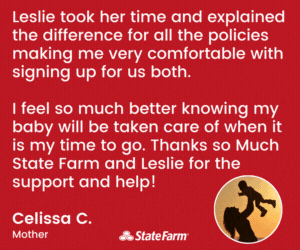Many misunderstandings on the field are the result of “Everybody Knows That…” rules myths. Listed below are a collection of common misbeliefs about Little League baseball and softball rules. Each of these statements are false. Clicking on each link will explain the correct ruling.
- The ball is dead on a foul tip.
- A batted ball that hits the plate is a foul ball.
- The base coach can’t leave the coach’s box during play or he/she will be guilty of interference.
- A batter-runner cannot overrun first base on a base-on-balls.
- A fly ball that is deflected over the fence is a ground rule double.
- A base runner cannot be guilty of interference on a ground ball if he or shedoesn’t touch the fielder.
- A batter who bats out of order is out.
- The pitcher gets eight warm-up pitches between innings.
- If a pitch hits a player’s hands it’s considered a foul ball, since hands are considered part of the bat.
- When the catcher blocks the plate without the ball, it should be called interference.
- The runner must always slide when the play is close.
- In order to be called out on a caught foul ball, the batted ball must go higher than the batter’s head.
- On an overthrow out of play, the runners get 1 plus 1; the base he/she is going to plus one base.
- If a fielder holds a fly ball for two seconds it’s a legal catch, even if he/she drops it thereafter.
- A runner who runs more the three feet away from a direct line between bases is out of the baseline and should be called out.
- In order to satisfy the mandatory playing rule, players must play six consecutive defensive outs.
- If a batter is batting out of turn, the scorekeeper should let the umpire know.
- When it’s getting dark, the league president or safety officer can order the game halted.
- On a double play ball, it’s mandatory for the runner going into second to slide or get out of the way.
- The runner is out if tagged when he/she turns to the left after crossing first base.
- It can’t be an Infield Fly if the infielder is standing on the outfield grass.
- In order for a runner to be called out for interference, it must be intentional.
- The home plate umpire can over-rule another umpire if he/she has more experience or a better look at the play.
- When the batter backs out of the box when a pitch is delivered, it’s an automatic strike.
- The batter is out when he/she hits the ball when he/she is touching home plate.
- A base coach cannot touch a runner. If he/she does, the runner is out.
- A runner cannot be called out if hit by a batted ball while standing on a base.
- In order to make a proper appeal play, the pitcher must first take the ball back to the mound.
- A batter cannot change from the left-handed to the right-handed batter’s box after two strikes.
- A pitch that bounces as it comes in cannot be hit.
- The batter is not out for interference with the catcher if he/she stays in the batter’s box.
- All appeals must be made verbally.
- Tagging the runner running from first on a ground ball is a tag play, not a force out.
- Judgment calls can be appealed if the manager feels that the umpire missed the call.
- When a relief pitcher replaces an injured pitcher, he/she gets as many warm-up pitches as he/she wants.
- Contact must occur for interference or obstruction to be called.
- If a fielder runs into an umpire while chasing a fly ball, this is interference and the batter should be called out.
- The batter-runner is always out if he runs outside the running lane after a bunted ball.
- Any Little League player who slides headfirst at any time is out.
- If the batter breaks his wrists when swinging, it’s a strike.
- If the batter does not pull the bat out of the strike zone while in the bunting position, it’s an automatic strike.
- Tie goes to the runner.
- Runners may not run the bases in reverse order.
- A runner may not steal on a foul tip.
- It is a force out when a runner is called out for not tagging up on a fly ball.
- An appeal on a runner who missed a base cannot be a force out.
- Runners may not advance when an infield fly is called.
- The batter does not get first base if hit by a pitch after it bounces.
- You must tag the base with your foot on a force out or appeal.
- The ball is always immediately dead on a balk.
- If a player’s feet are in fair territory when the ball is touched, it is a fair ball.
- If a fielder catches a fly ball and then falls over the fence it is a home run.
- The ball is dead anytime the ball hits an umpire.
- Runners must stay on their bases until the pitcher releases the ball.
- The batter is out if he starts for the dugout before going to first after a dropped third strike.
- The pitcher must come to a set position and stop before a pick-off throw.
- The pitcher must step off the rubber before a pick-off throw.
If you would like a “quiz” covering these that you can give to a friend, you can download one here. Note that this version is Major Baseball-specific – it does not contain softball-specific items, or ones that apply only to Juniors and up.










Write a review